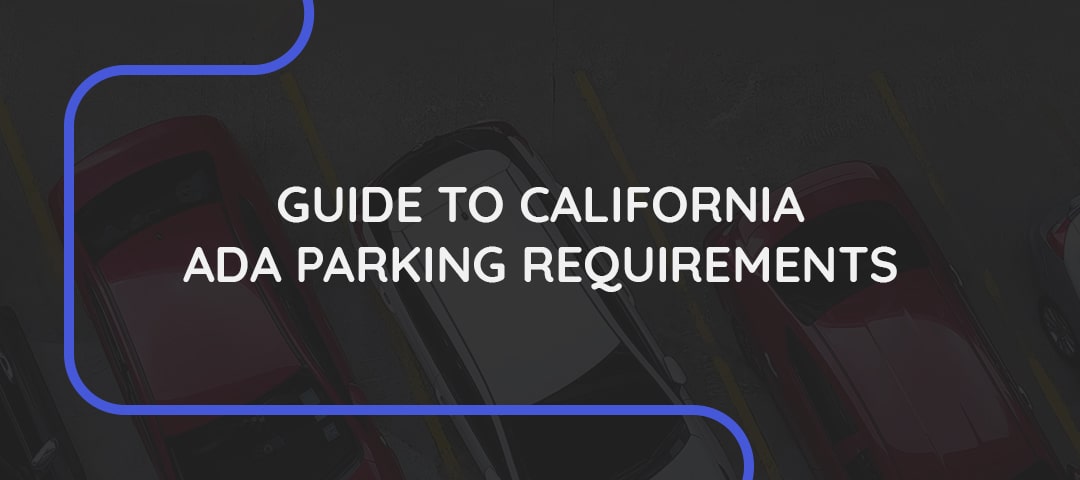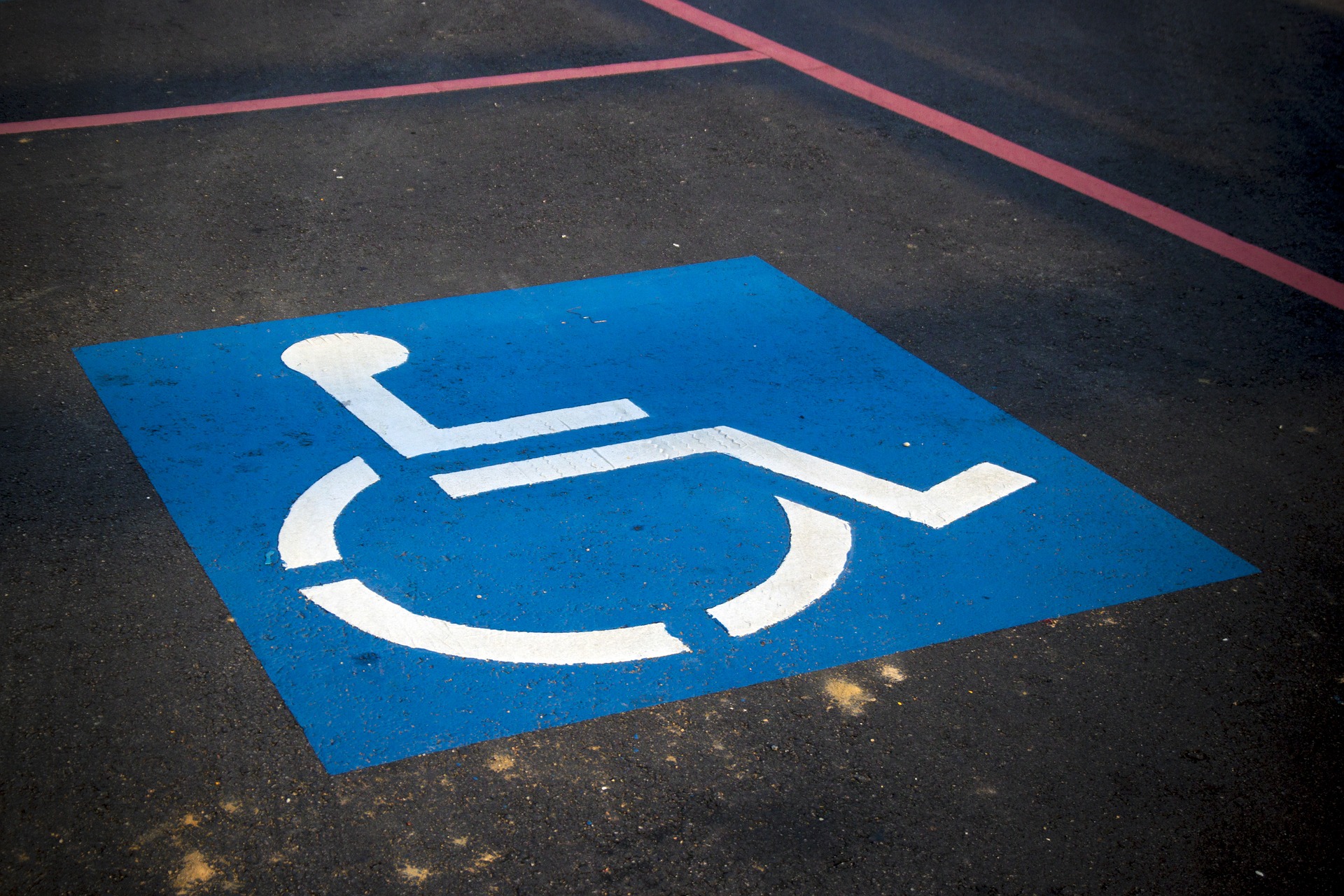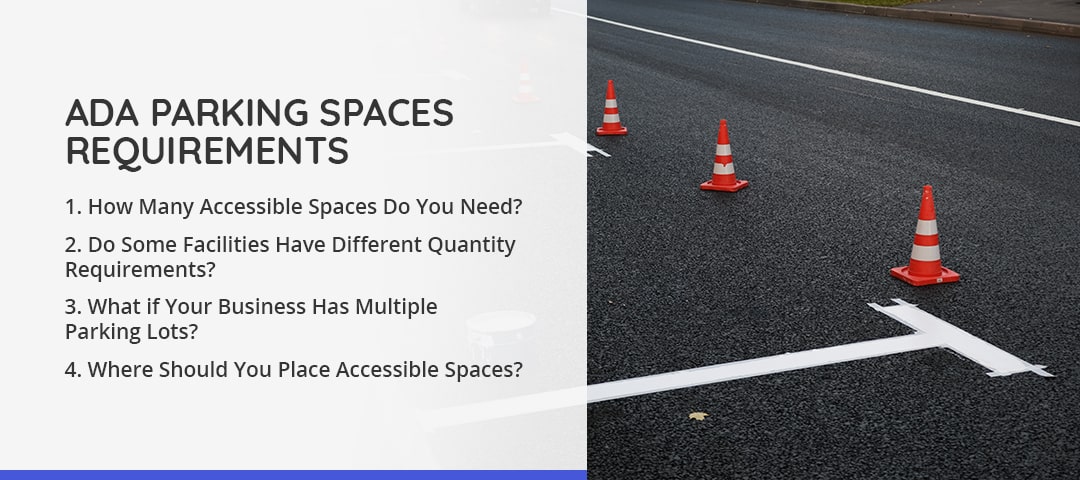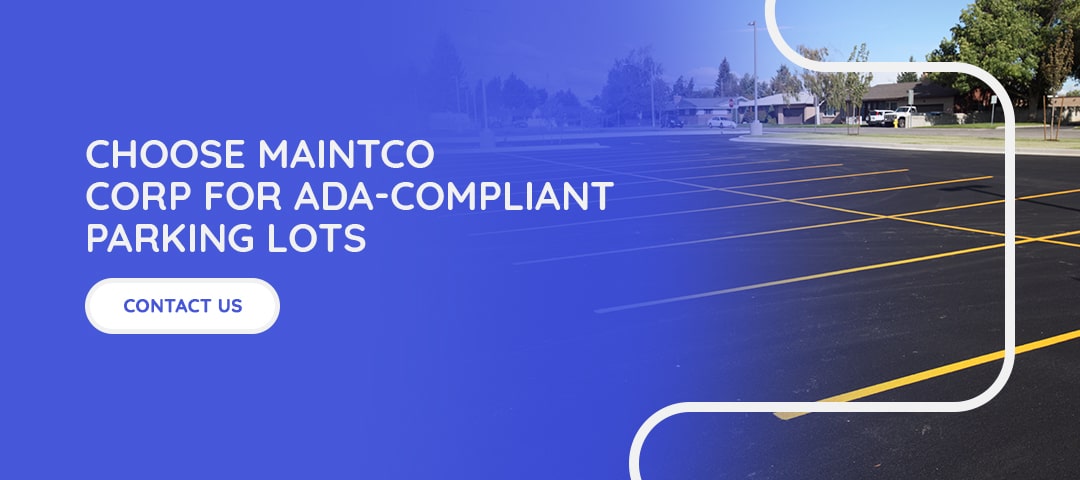


With 26% of Americans living with a disability, creating accessible spaces is critical. Businesses and public places should follow the Americans with Disabilities Act (ADA) Standards for Accessible Design to ensure their facilities meet the minimum accessibility requirements.
One of the forefront design elements in any business or public place is the parking lot. This page provides an overview of the ADA parking lot guidelines to help your business plan accordingly.
An ADA-compliant parking lot is a space with access for people with disabilities. Every parking facility on a site should have accessible spaces, as outlined by the ADA Standards. Types of facilities that require accessible parking include:
Unpaved parking lots should feature firm, slip-resistant surfaces on accessible spaces. For example, a gravel lot — even with designated and correctly sized accessible parking — would not be accessible to someone who uses a wheelchair. However, providing wheelchair-friendly surfaces would improve accessibility.
You must ensure your parking facilities meet ADA Standards whenever you:
If you’re constructing a new lot or altering an existing lot, ensure you meet the ADA Standards for parking lot design. The standards specify size, slope, signage and the required number of spots.
Accessible parking spaces must be at least 96 inches wide with a 60-inch-wide access aisle.
Each parking facility must also include a specific number of van-accessible spaces. Van-accessible spaces should be at least 132 inches wide and have a vertical clearance of 98 inches. You could also include the 36 additional inches in the access aisle.
All accessible spaces should have an adjacent access aisle to provide navigational space for people with disabilities. The access aisle connects the parking spot to an accessible route leading up to the building. There are guidelines for access aisles describing:
All accessible spaces, access aisles and paths must also meet slope requirements. The maximum slopes for each are:
When striping your parking lot, you must include deterrents in access aisles to reduce the possibility of people parking in them. For example, access aisles often feature several diagonal lines painted across the width of the space.
You’ll also need to consider whether your parking spaces will be angled or not. Accessible spaces may be angled. However, angled van spaces must include an access aisle on the passenger side. Though not required by ADA Standards, you might consider including access aisles on both sides of angled accessible spaces to improve your lot’s usability.
Generally, you should calculate each space’s required width from the center of the stripe. If the spot has no adjoining spaces or aisles on either side, you might include the stripe’s full width.
Additionally, you must mark all accessible spaces and access aisles.

ADA Standards for the number and location of accessible parking spaces depend upon various factors. Four questions to help you understand the typical requirements include:
The minimum number of accessible spaces depends upon the total number of parking spots in your lot:
Additionally, you must have at least one van-accessible space for every six accessible spots. For example, a lot with only one accessible space should make that spot van-accessible. If your parking lot has seven accessible spaces, at least two of them should be van-accessible.
Some facilities — namely, outpatient hospital facilities, physical therapy offices, mobility-focused rehabilitation centers and residential facilities — require different numbers of accessible parking spaces:
Any business with multiple parking facilities must calculate the number of accessible spaces for each lot. In other words, if your business contains a parking garage with 600 total spaces and a standard parking lot with 150 spaces, your garage should have 12 accessible spots, and your lot should have five accessible spots. These guidelines also apply to businesses with parking lots separated by a street or distinct parking lots for different on-site buildings.
Accessible spaces should connect to the shortest accessible route to each accessible entrance. In other words, if your business has multiple accessible entrances, arrange your accessible parking spots to provide balanced access to each entrance. For example, you might place half of your accessible parking spots along the path to the front entrance and half along the route to the back entrance.
All accessible spaces must feature a sign designating them as accessible spaces. The signs must include the Internal Symbol of Accessibility (ISA) and be at least 60 inches from the ground. Van-accessible spaces should also state “van accessible,” but these spaces are not restricted to vans only.
Are you building a new parking lot for your business or adding to an existing lot? If so, you must comply with ADA Standards. Maintco Corp’s construction experts are familiar with the ADA parking lot requirements and can help you stay compliant. Learn more about our ADA compliance services today. If you’re ready to talk to our team about how we can help you construct an ADA-compliant parking lot, call us at 818-276-6300 or contact us online today!

Are you building a new parking lot for your business or adding to an existing lot? If so, you must comply with ADA Standards. Maintco Corp’s construction experts are familiar with the ADA parking lot requirements and can help you stay compliant. Learn more about our ADA compliance services today. If you’re ready to talk to our team about how we can help you construct an ADA-compliant parking lot, call us at 818-276-6300 or contact us online today!